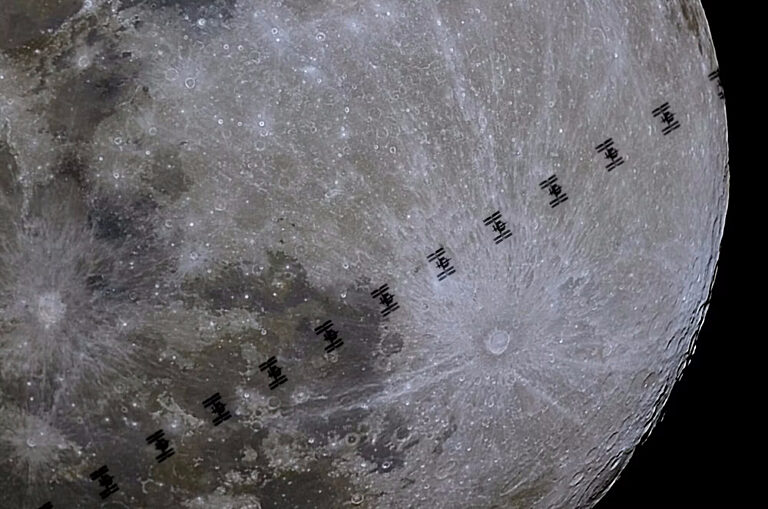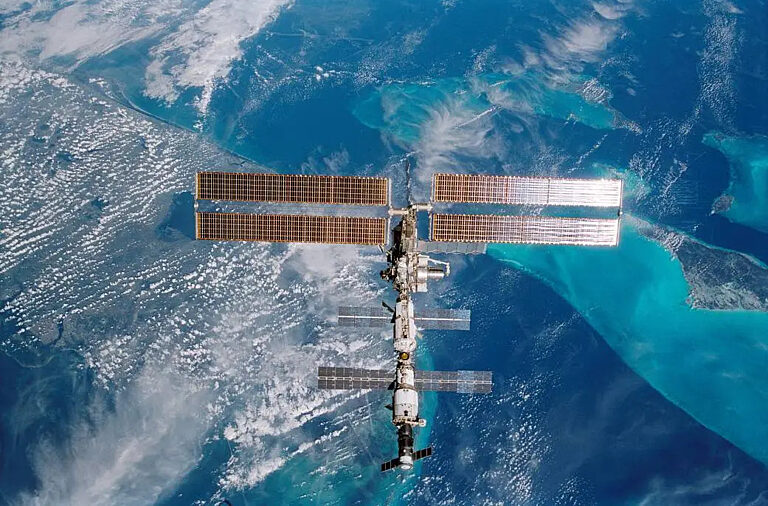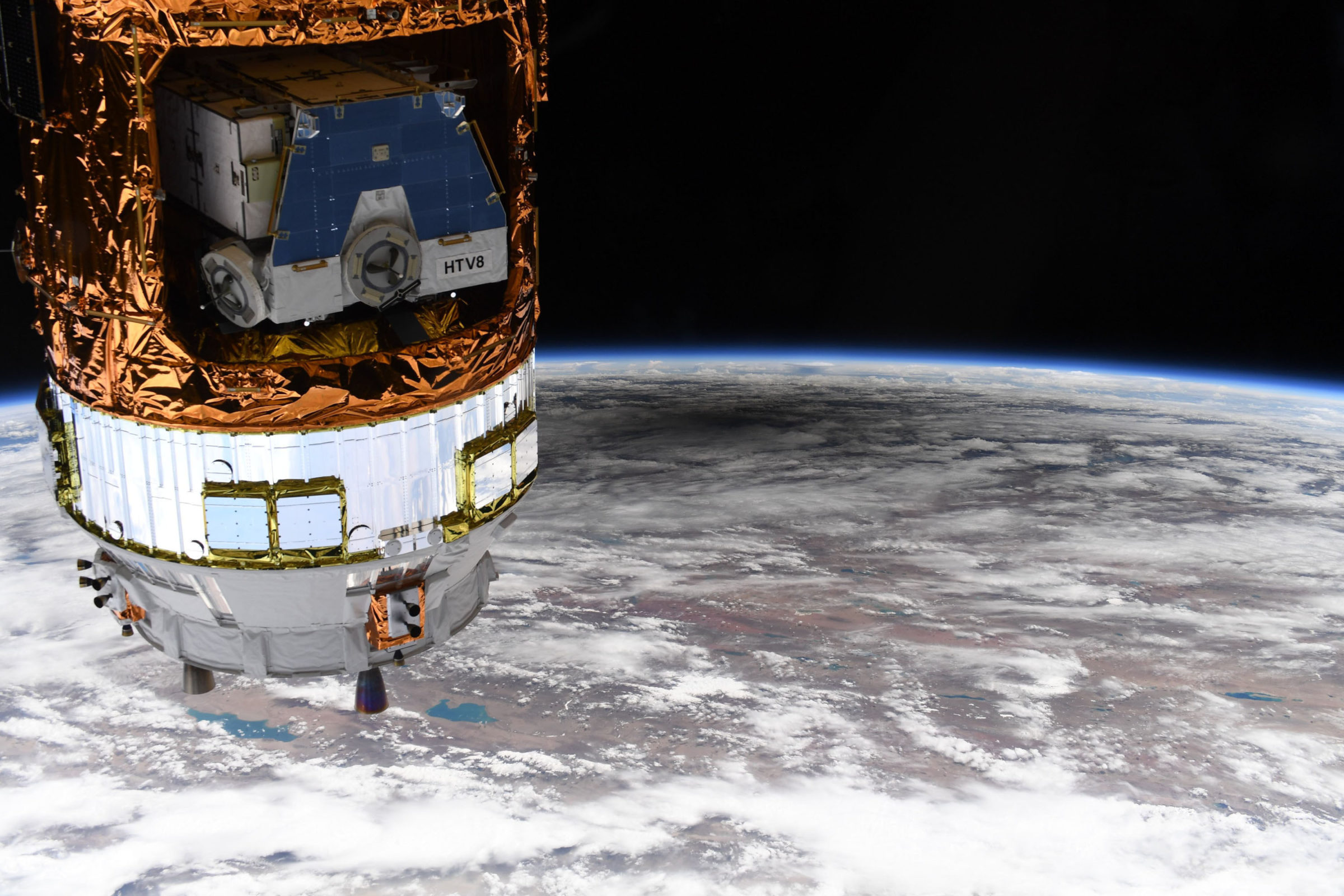Asa Stahl • Jun 14, 2024
How to spot the ISS
Spotting the International Space Station (ISS) is an easy — but profound — stargazing experience. From almost anywhere on Earth, it’s possible to see the orbiting space lab where astronauts are constantly working to push the frontiers of human spaceflight. Besides being one of the most high-tech projects in all of history, the ISS also happens to be one of the most recognizable objects in the entire night sky.
When can I see the ISS?
Two things have to happen for the ISS to be visible with the naked eye: it has to pass overhead, and it has to be near the edge of Earth’s shadow. If the space station is not in Earth’s shadow when passing overhead, then that means it’s daytime, and the Sun will outshine the ISS and make it almost impossible to see. But if the space station is in the middle of Earth’s shadow, then it won’t reflect enough sunlight to appear bright from the ground. Only near the edge of Earth’s shadow are conditions just right for viewing. Typically, that’s around dawn or dusk.

Luckily, those conditions are common enough for the ISS to be visible frequently to almost the entire population of Earth. So long as you don’t live in the very extreme north or south of the world — think Antarctica or northern Canada — then you can probably expect to see the ISS at least once a month, and perhaps as much as multiple times a week.
To find out about the next sighting opportunities, enter your location into NASA’s Spot the Station widget below. You can also visit the Spot the Station website or download the Spot the Station app, which is available for iOS and Android. The app will allow you to sign up for text alerts in advance of the next possible ISS sighting — or, sign up for email notifications here.
If you want stay more up to date on the ISS than getting these alerts, check out ISS Above, a device developed by Planetary Society member Liam Kennedy. When plugged into a TV and router, this device will display the space station's orbit, its path in the night sky, and live video from cameras on board.
How bright is the ISS?
It depends, but the ISS is sometimes one of the brightest objects in the sky and can be seen from the hearts of major cities. At its brightest, the space station is only outshined by the Sun and the Moon. This isn’t because the ISS has lights glaring from it, but because it is very good at reflecting sunlight, especially with its solar panels. The ISS is brighter than both the brightest planet, Venus, and the brightest star besides the Sun, Sirius.

How should I try to spot the ISS?
Find somewhere with a relatively open view of the sky and head there several minutes before the ISS passes above. Expect the ISS to rise in the west (the direction the Sun sets in), and consider using Spot the Station to find out exactly what direction it will be traveling in and how high in the sky it will be. A listed height of 90 degrees means the ISS will pass directly overhead. For lower heights, you can count from either the horizon (0 degrees) or directly overhead using your fist, which spans roughly 10 degrees when extended at arm’s length.
The ISS should appear as a bright and solid light gliding across the sky. It should move quickly and usually crosses the sky in minutes. Unlike an airplane, the light of the space station won’t blink, though on occasion it may flash brighter (not repeatedly) as sunlight catches the station at just the right angle. There should not be much risk of confusing the ISS with SpaceX’s thousands of Starlink satellites now in orbit, since the ISS ought to be much brighter.
You don’t need any special equipment to see the International Space Station under good conditions. Binoculars will make it appear brighter and more colorful, though, and with the right telescope setup, it is possible to make out the station’s solar arrays and even its individual modules.

What is the International Space Station?
The International Space Station is humanity’s shared space laboratory in low-Earth orbit. Since 2000, hundreds of astronauts from countries around the world have rotated in and out of the station to conduct science experiments and test space technology. The ISS is also a famous symbol of international collaboration, operating thanks to the cooperation of 15 different nations. A variety of space agencies work together on the station, including NASA, the Japanese Aerospace Exploration Agency (JAXA), the European Space Agency (ESA), the Canadian Space Agency (CSA), and the Roscosmos State Corporation for Space Activities (Roscosmos).

The Time is Now.
As a Planetary Defender, you’re part of our mission to decrease the risk of Earth being hit by an asteroid or comet.
Donate Today

 Explore Worlds
Explore Worlds Find Life
Find Life Defend Earth
Defend Earth

